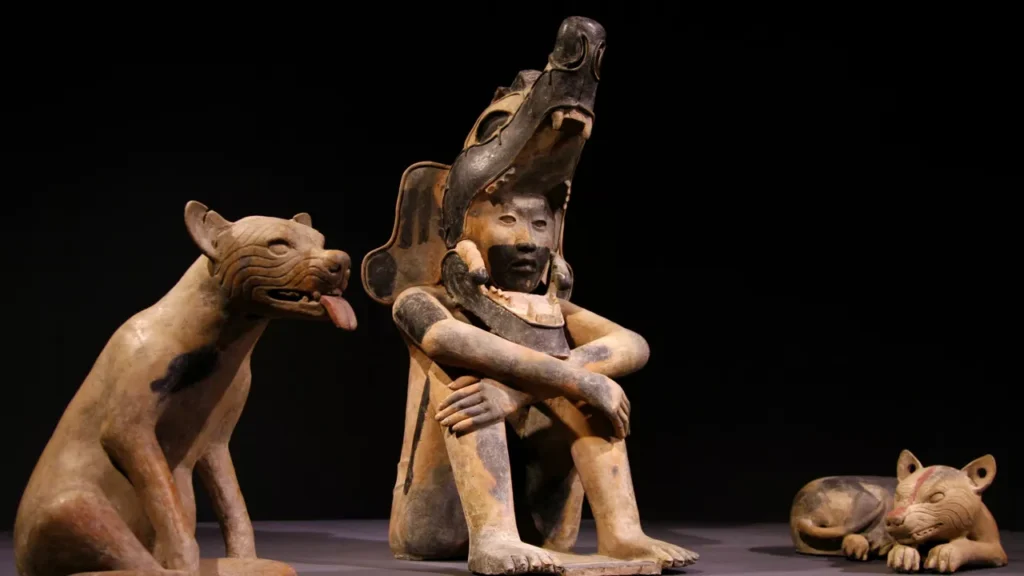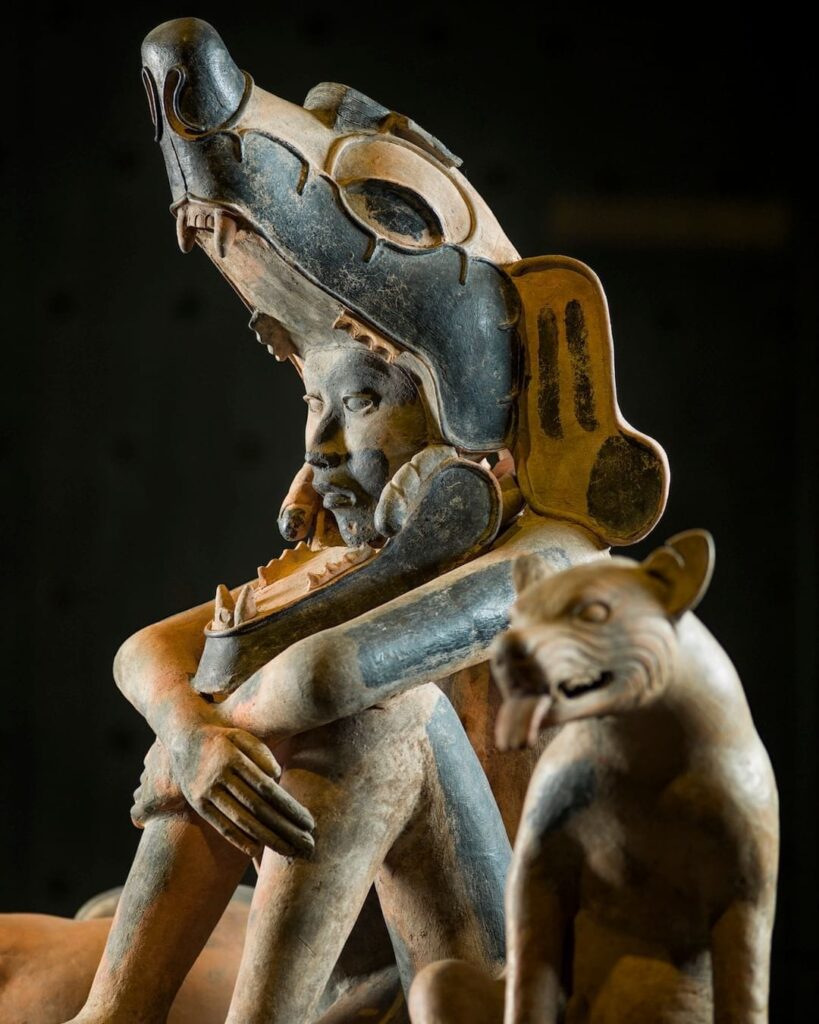Introduction to the Artifact
This fascinating sculpture from Veracruz, Mexico, dating to 400–800 A.D., depicts a seated man accompanied by two dogs, although only one is visible in surviving imagery. The man wears a full-head mask in the form of a prairie wolf, suggesting a connection to themes of power, spirituality, or protection. This artifact provides unique insights into the art, beliefs, and cultural practices of the Veracruz civilization during the Classic Period.
Artistic Features and Symbolism
The Warrior Figure
The seated posture and mask suggest that the figure may represent a warrior. In Mesoamerican cultures, warriors often held an elevated social and spiritual status, serving as both protectors and key participants in rituals. The prairie wolf mask likely symbolizes qualities such as strength, cunning, and resilience, attributes often associated with warriors or leaders.
The Role of Dogs in Mesoamerican Beliefs
Dogs held a special place in Mesoamerican cosmology. In many traditions, they were seen as spiritual guides, particularly in the afterlife. Dogs were thought to accompany the deceased on their journey to Mictlán, the underworld. The presence of dogs in this sculpture may indicate a ritualistic or funerary context, linking the figure to death, protection, or guidance.

Cultural Context
The Veracruz Civilization
The Veracruz region, known for its rich artistic traditions, was a hub of cultural innovation during the Classic Period. Ceramic sculptures like this one reflect the advanced craftsmanship of Veracruz artisans. Their works often incorporated symbolic motifs tied to religious practices, mythology, and societal roles.
Masks in Mesoamerican Art
The full-head mask, resembling a prairie wolf, is an excellent example of how Mesoamerican societies used animal imagery to convey deeper meanings. Masks were not merely decorative but served as tools for transformation, enabling wearers to channel the essence or power of the animal depicted.
Function and Purpose
Ritualistic Use
Given the intricate design and symbolic elements, this sculpture was likely used in religious or ceremonial contexts. It might have been placed in a temple, burial site, or other sacred space to honor a deity, protect the deceased, or convey mythological narratives.
Status and Identity
The figure’s mask and association with animals could also reflect its subject’s elevated status, perhaps as a shaman, leader, or revered warrior. In Veracruz culture, such depictions were often reserved for individuals of significant importance.

Significance of the Prairie Wolf
The prairie wolf, or coyote, holds a prominent place in Mesoamerican mythology. Known for its cunning and adaptability, it often appears as a symbol of survival and transformation. By wearing this mask, the figure might embody these traits, linking human and animal realms in a powerful visual narrative.
Conclusion
This sculpture of a seated man with dogs, wearing a prairie wolf mask, is a testament to the artistic and cultural richness of Veracruz, Mexico, during the Classic Period. Its intricate details and symbolic layers provide valuable insights into the beliefs, rituals, and societal values of the time. Through this piece, we glimpse the enduring connections between humans, animals, and the spiritual world in ancient Mesoamerican cultures.
